Round 4
Games of the Day, Round 4
Edited by GM Alexander Kalinin
The duel attracting the most attention from spectators this round was the match Daniil Dubov – Vladimir Belous from the Student-grandmaster round-robin.
Young chess players gathered in the hall for commentary and engaged in sorting through the combinational lines resulting from the bold sacrifice of white's bishop.
The Art of Sacrifice.
I hope that after becoming familiar with the game played by the young grandmasters from Mosocow, the readers will want to find a copy of Rudolf Speilmann classic book “The Art of Sacrifice in Chess.” In it the Hungarian maestro suggested making the distinction between “sham” and “real” sacrifices. Sham sacrifices can be cleary analyzed to at least a regain of material. Speilmann considers real sacrifices those which cannot be calculated through, and thus entail an element of risk.
It was precisely this second type of sacrifice, requiring not only bravery but also accute positional evaluation, displayed by Daniil Dubov.
In chess journals and books we often see the “glossy” picture – grandmasters, after painstaking home analysis, assure us that they saw and calculated everything ove the board. In the interview. In the intervew immediately after the round, Daniil explained in detail his thoughts and impressions during the game. As I see it, this material, the veritible reflection of the thought process of the grandmaster in the course of stressful tournament struggle, is invaluable to the reader. For this reason, I thought it impossible to changes or additions to the express remarks of Daniil, so that you may get to know the thoughts of a chess player in their pure form.
And now, the annotation of Daniil Dubov:
There was uncompromising struggle during the whole game: we both were playing for the win, as I started the game poorly and Volodya’s start was even worse. His opening play came as somewhat of a surprise. I know, there is such a line, but it's been a long time since I've studied it.
Daniil Dubov – Vladimir Belous
A. Pochkin Memorial, student-grandmaster tournament
1.Nf3 d5 2.d4 Nf6 3.c4 e6 4.Nc3 Nbd7 5.cxd5 exd5 6.Bg5 c6 7.e3 Bd6 8.Bd3 Nf8 9.0–0 Ng6
Volodya's opening play came as somewhat of a surprise. I know, there is such a line, but it's been a while time since I've studied it. It seems not long ago Volodya Fedoseev was playing as black. Now that Volodya is a star, it’s best to follow all his games carefully.
10.e4 dxe4 11.Bxf6 Qxf6 12.Nxe4 Qd8
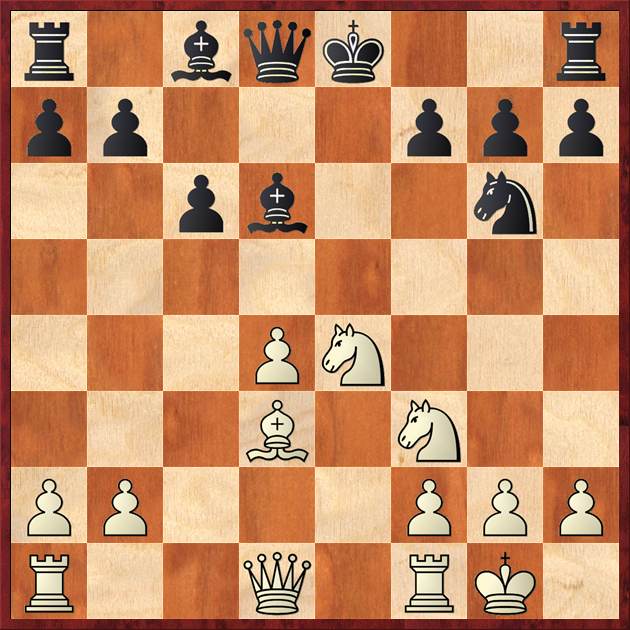
Here I considered 13.Nxd6+ Qxd6 14.Re1+ и 13. d5 and coudn't remember which move was good and which was bad. In the game there continued 13. d5, and it seemed it couldn't be too bad.
13.d5 Bf4
Volodya thought for a while. Here was an interesting moment: black could go 13…Nf4, and I, but the way, wasn't very sure how to go on. It seems I should play 14. Nxd6+ Qxd6 15. Re1+ Kf8 16. dxc6, and then there arises a strange position after 16…Nxd3 17. Re3, and it seems that for white everything is coalescing. At least that's what I would like to believe.
14.dxc6 bxc6 15.Bc4 Bg4
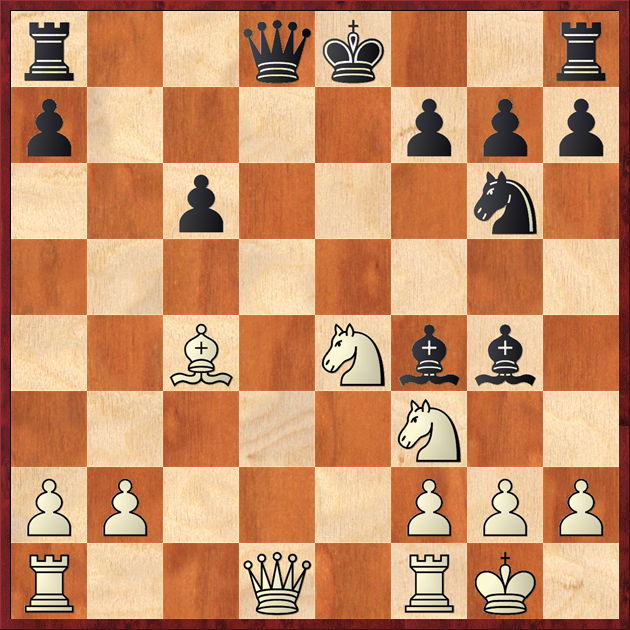
The critical position. It seemed to me that if I don't take on f7, then I have no advantage. Usually I try to evaluate such positions logically, and that's why I considered that I needed to continue 16. Bxf7+, because otherwise black gets completely comfortable. Thus, logically, if I have no other move, the sacrifice gets played.
16.Bxf7+!? Kxf7 17.Nfg5+ Bxg5 18.Qxg4 Be7
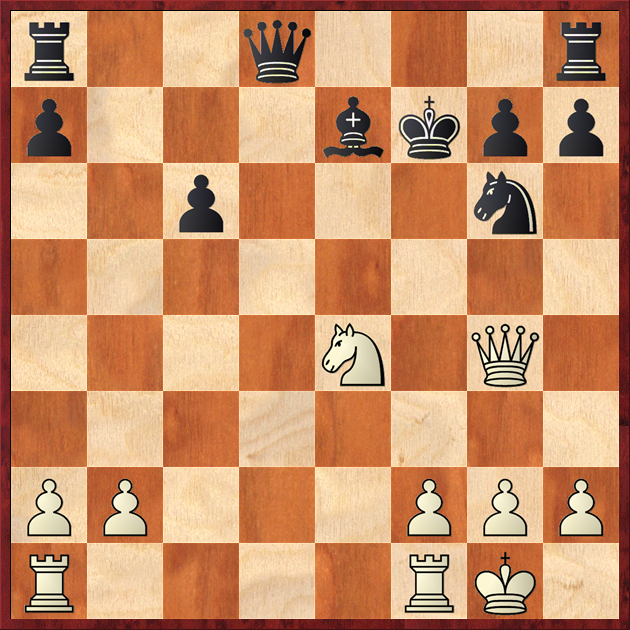
Here there are a mass of moves. The opponent preferred the most logical variation. Here my intition tells me that I made a mistake, because I had a choice between 19. Rad1 or 19. Qf3+. I think I should have given the check on f3. Because after 19. Rad1 I have no chance to force the king to the eigth rank and the rooks can connect. This is a very important moment, especially when you're down a piece. On 19. Qf3+ black retreats to g8, and after that I can also move 20. Rad1 and then 21. Rfe1 – I think that this was more intelligent.
19.Rad1 Qa5 20.Rd7
Here I oversaw that not only is doing fine, but also my opponent's next move.
20…Rhf8
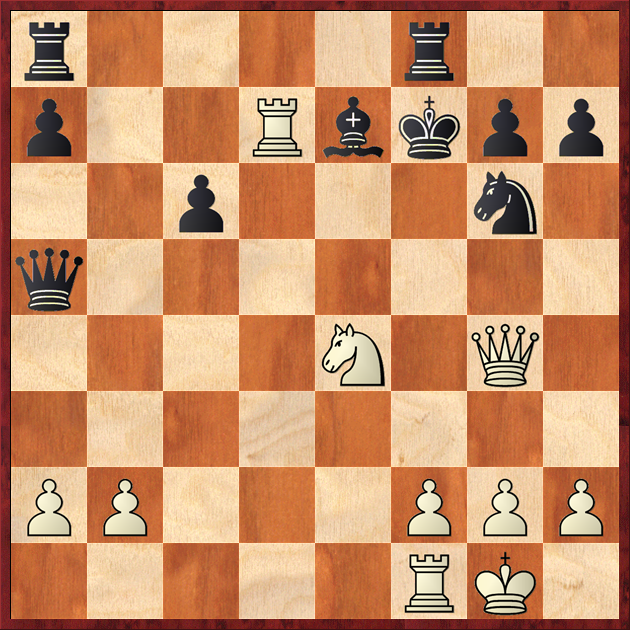
20…Rhf8 -it's a brutal move. I realized that if I want to fight for even equality, then I need to move 21. h4. Perhaps here white is doing alright, but considering that I had made an oversight I was feeling pessimistic.
21.h4 Qe5
A sensible answer
22.h5 Nf4
Here black could play the knight back to h8, and actually, in light of later events, I think this would have been stronger than 22…Nf4.
23.Re1 Kg8
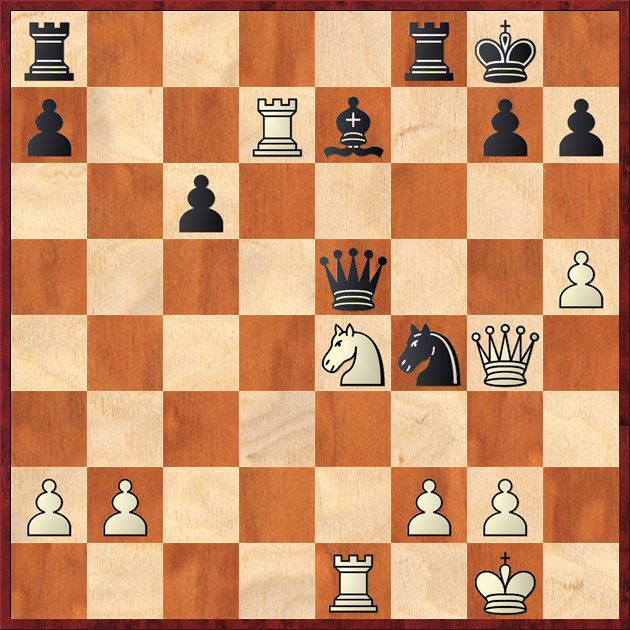
24.Nf6+ Qxf6
Now 24…Bxf6 loses because of 25. Rxe5 Bxe5 26. g3, and if the knight retreats, there follows check on e6, and the bishop is lost. And if the knight were on h8 I would give an immediate check on e6, but there would be the move 26…Nf7, and black is somehow holding. If black works his way out, the I'll be simply worse. 25.Rexe7

Here it seems to me the key variation was 25…Nxh5, and then after 26. Qxh5 Qxf2+ it's very important that I can move the king to h1, making one extra move before the time control. 27…Qf1+ 28. Kh2 Qf4+ 29. Kh3, and here I don't see the way for black to save the game, though maybe it's there. It's important that on 29…Qf6 there is 30. Qg4 Qh6+ 31. Kg3
25...g5 26.hxg6
Apparently, Volodya oversaw a move: he went 25…g5 26. hxg6, not seeing that on 26…hxg6 the blow 27. Qxf4! Qxe7 28. Qc4+.
In case of 26…Nh3+ 27. Qxh3 Qxf2+ 28. Kh2 Qf4+ 29. Qg3 black has a check on h6, but after 30. Kg1 Qc1+ 31. Re1 Qc5+ 32. Re3, it seems I'm already winning.
26…Nd5?
A blunder. Here I quickly whipped out
27.Rg7+, and black resigned.
The main line was 27…Kh8 28.Rxh7+ Kg8

29.Qe6+ Qxe6 30.Rdg7#. Я расстроился, что удар Qe6+ остался за кадром, поэтому надо было с него начинать вместо 27. Rg7+.















